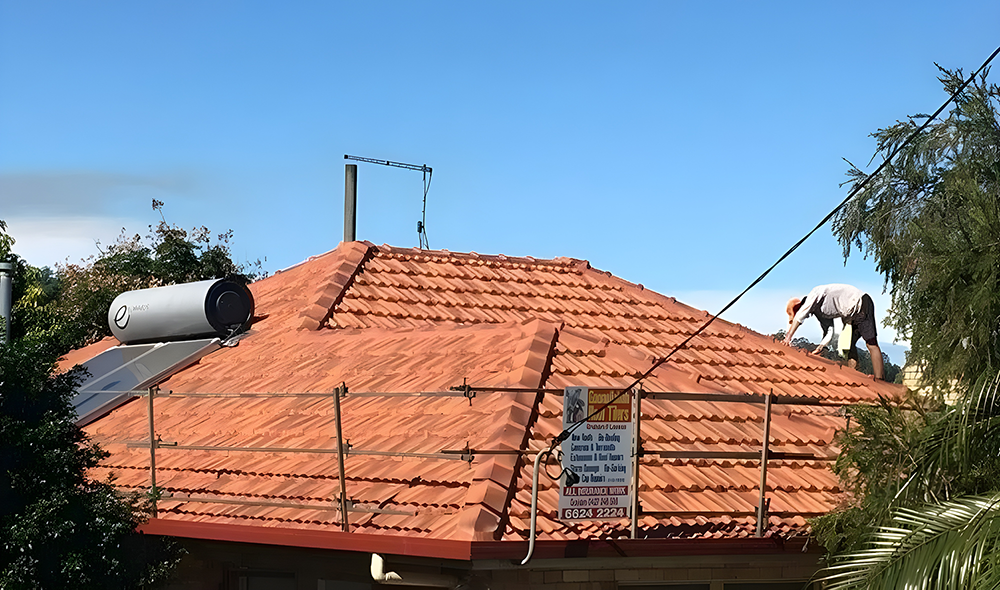What to Expect During a Re-Roofing in Lismore
Re-roofing a home or commercial property isn’t something you do often, but when the time comes, it’s a major project that deserves careful planning and professional execution. Whether it’s storm damage, general ageing, or you’re looking to modernise with new materials, understanding what to expect during a re-roofing job is essential. In Lismore, unique environmental factors like heavy rainfall and humidity play a big role in preparation and material selection. This blog walks you through every stage of a re-roofing project so you can plan confidently and avoid surprises.
Initial Roof Inspection: Identifying the Scope of the Project
Every re-roofing journey starts with a thorough inspection. This isn’t just a glance at your tiles—it’s a comprehensive assessment of your entire roofing structure.
Lismore roofing professionals will evaluate:
- The age and condition of your current roof materials
- Signs of water damage, moss growth, rot, or sagging
- Structural concerns like loose battens or decking movement
- The effectiveness of your roof’s ventilation and drainage
- Areas where leaks have previously occurred
A detailed inspection helps uncover the full scope of works, ensuring no nasty surprises halfway through.
Selecting the Right Roofing Materials for Lismore’s Climate
After the inspection, the next step is to select your new roof materials. Your choice should consider longevity, performance, and how well it will handle Lismore’s frequent rain and humidity.
Here are some popular options roofing contractors may recommend:
- Concrete tiles – Durable and affordable, ideal for homes with tile profiles. They hold up well in rain-heavy environments and are easier to maintain than terracotta.
- Terracotta tiles – A more premium and traditional option. They resist moisture absorption and retain their colour over time.
- Metal roofing – Lightweight, corrosion-resistant and quicker to install. Metal is also ideal for steep pitches and works well in areas prone to strong winds or hail.
Other considerations may include adding roof sarking (a reflective foil beneath tiles), upgraded insulation, or choosing heat-reflective coatings to improve energy efficiency.
Understanding the Quotation & Timeframe
Once the materials and scope are clear, your roofing company will present a detailed quote. Reviewing this document closely is vital to ensure you understand what’s included.
Expect to see:
- Labour and installation costs
- Materials—tiles, sarking, battens, ridge capping, and flashing
- Disposal of old roofing and site clean-up
- Potential structural repairs if discovered mid-project
- The estimated project duration is often between 3 and 7 days, depending on the roof size
If your home needs council approval—such as when switching from tile to metal roofing—this may also extend the lead time.
Preparing Your Property for the Roofing Crew
Before work begins, it is helpful to make a few simple preparations to ensure access and safety for both the roofing crew and your household.
Here’s what you can do:
- Clear driveways and paths for scaffold delivery and material storage
- Move cars away from the site to avoid accidental damage
- Cover or relocate delicate outdoor items like plants or garden furniture
- Inform neighbours if there will be significant noise or traffic
- Keep pets and children indoors during construction hours
If your roof houses solar panels, satellite dishes, or skylights, qualified technicians will likely need to remove and reinstall them, which your roofer can usually coordinate.
Roof Removal: Managing Noise, Debris, & Disruptions
The removal phase is the loudest and most visible part of re-roofing. Roofers carefully strip off sections of your old roofing material to protect your home while they work.
Expect the following:
- Demolition noise, especially when removing tiles or cutting metal
- Temporary gaps in roof coverage are usually covered by tarps or sarking until new materials are in place
- Dust and debris falling around your home’s perimeter
- On-site bins or skip hire for waste disposal
- Early morning starts and access for delivery trucks or scaffolders
Structural Repairs & Roof Deck Preparation
Once your old roof is removed, the structure underneath will be revealed. At this stage, any damaged timber, sagging battens, or inadequate insulation will be addressed.
Roofing crews typically:
- Replace or reinforce roof battens to meet Australian Standards
- Install or upgrade sarking for moisture control and thermal efficiency
- Check and repair eaves, fascia boards and roof trusses as needed
- Address any structural rot, termite damage or ceiling leaks
- Prepare surfaces for underlay and new material installation
This step ensures the longevity of your new roof and helps prevent issues like mould growth, heat loss, or water ingress during Lismore’s wetter months.
Installation of the New Roof: What Happens Each Day
With prep complete, the new roof goes on in a systematic process. Whether you’ve chosen tiles or metal, roofers will install the new layers to create a watertight, secure finish.
Installation involves:
- Fixing underlay and sarking across the roof deck
- Laying tiles or metal sheets from the gutter line to the ridge
- Cutting and fitting flashing around chimneys, vents, and valleys
- Sealing ridge capping and applying finishing touches
- Fitting whirlybirds, skylights or vents if included in the upgrade
The crew will clean up at the end of each day to prevent accidents and manage off-cuts or debris.
Final Checks, Clean-up & Long-Term Maintenance Tips
The last phase is all about quality control and presentation. Once the roof is complete, your contractor will complete a comprehensive inspection and handover checklist.
This includes:
- Ensuring all tiles or sheets are securely fixed
- Checking flashing and ridge capping for full waterproofing
- Cleaning out gutters, downpipes, and removing site rubbish
- Removing temporary scaffolding and barriers
- Advising on roof care and future maintenance schedules
To maximise the lifespan of your new roof in Lismore’s climate:
- Clean gutters regularly, especially after storms or high leaf fall
- Inspect flashing and sealants annually for cracks or movement
- Schedule periodic roofing inspections every 5–7 years
- Repair small issues early before they become costly problems
Looking for Reliable Roofing Near You? We’ve Got You Covered
At Goonellabah Roof Tilers, we offer a full suite of roofing services in Lismore to support your re‑roofing project from start to finish. Our team brings over 30 years of Northern Rivers experience to every job, ensuring you receive expert guidance for every stage — from the initial inspection, through roof tiling, re‑sarking, structural repair, installation and final quality checks.
Ready to upgrade your roof safely and effectively? Get in touch with our team via our contact page or give us a call to book a free consultation.








